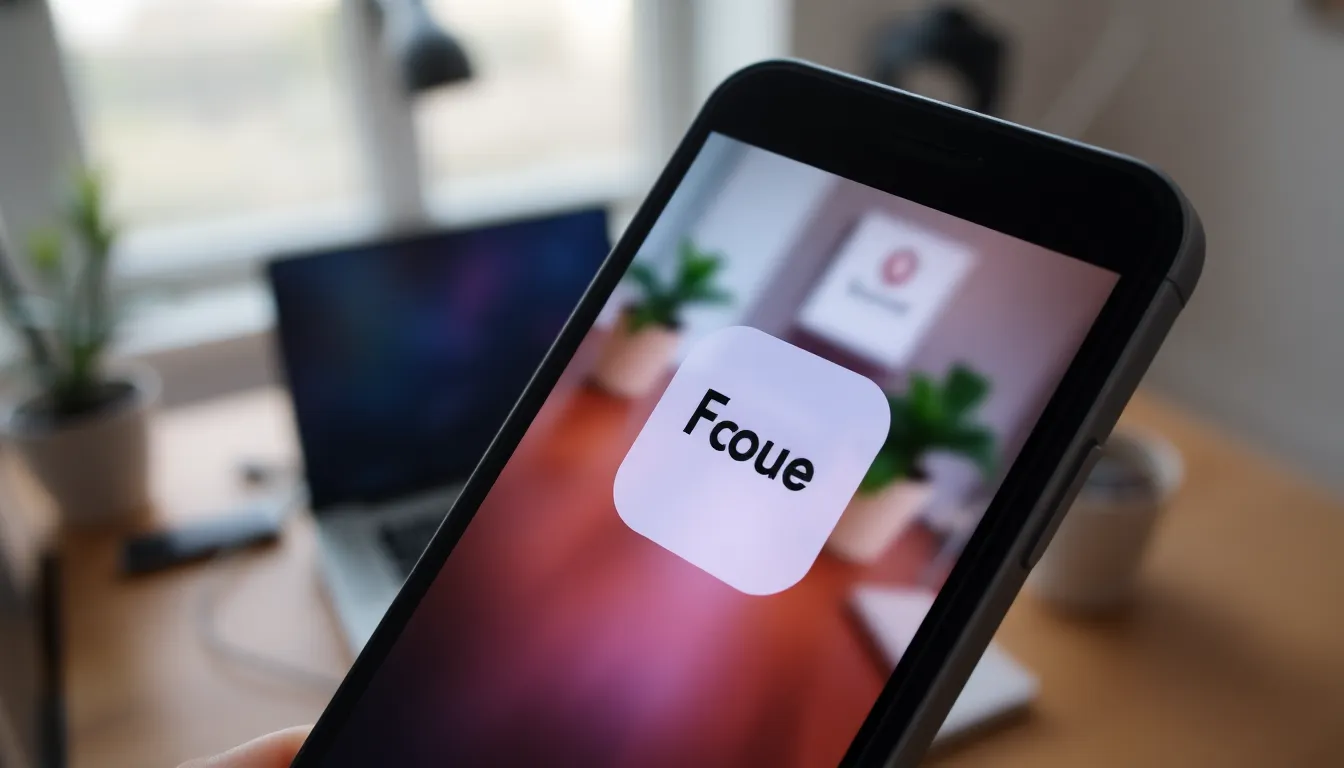Table of Contents
ToggleIn a world where the iPhone reigns supreme, it’s easy to feel like a loyal subject to its never-ending notifications and endless scrolling. But what if there’s a way to break free from its grip without resorting to drastic measures like throwing it into a lake? Spoiler alert: there is!
Understanding Focus Mode on iPhone
Focus Mode helps users minimize distractions from notifications and apps. This feature allows individuals to customize their iPhone experience, fostering a more attentive environment.
What Is Focus Mode?
Focus Mode is a feature on iPhone designed for managing interruptions. Users can set specific parameters to receive only essential notifications during designated times. For instance, one can create a work mode to silence social media alerts while allowing important emails. This flexibility allows personalization, adapting to different activities like reading or exercising.
Benefits of Using Focus Mode
Using Focus Mode offers several advantages for users seeking to reduce distractions. It improves concentration by limiting unnecessary notifications during critical tasks. With simplified settings, individuals can prioritize work-related communications while setting personal time for relaxation. Moreover, increased productivity results from sharper focus and fewer interruptions. Users also experience less anxiety from constant alerts, contributing to overall well-being.
Steps to Take Focus Off iPhone

Adjusting Focus Mode settings helps reduce distractions and regain control of iPhone usage.
Disabling Focus Mode
Disabling Focus Mode requires just a few taps. Open the Control Center by swiping down from the upper-right corner on iPhones with Face ID or swiping up from the bottom on older models. Locate the Focus icon, which looks like a crescent moon, and tap it. Disabled Focus Mode allows all notifications to come through, fostering a more connected experience. Ensure that this step fits the preferred level of engagement with the device when it’s not necessary to minimize distractions.
Customizing Focus Settings
Customizing Focus settings enhances user experience. Begin by navigating to Settings, then tapping on Focus. From there, select an existing Focus mode, such as Work or Personal. Users can define allowed notifications from contacts and apps by tapping on People and Apps. Additionally, schedules can be set to automatically activate these modes at specific times. This personalization helps streamline notifications and minimize potential interruptions, providing an ideal environment for focused work or relaxation.
Alternatives to Focus Mode
Exploring alternatives to Focus Mode can help manage distractions effectively. Various techniques exist to assist users in reducing notifications and improving concentration.
Utilizing Do Not Disturb
Do Not Disturb provides a straightforward way to minimize interruptions. Activating this feature silences calls, alerts, and notifications during specified periods. Users can customize settings to allow calls from particular contacts, ensuring essential communications remain accessible. This feature aids in creating an uninterrupted environment, perfect for focused work or quality time. Enabling Do Not Disturb during nightly rest improves sleep quality by avoiding disruptive notifications.
Managing Notifications Effectively
Managing notifications directly impacts how distractions affect daily life. Users can selectively enable or disable notifications for individual apps, ensuring only essential alerts come through. Adjustments can be made within the Settings app under Notifications, allowing customization based on personal preferences. Prioritizing important notifications streamlines the user experience, keeping attention on significant tasks. Regularly reviewing these settings helps maintain control over notifications as app usage evolves. Reducing overall notifications can lead to better focus and overall well-being.
Tips for Reducing iPhone Distractions
Reducing distractions from an iPhone can enhance focus and well-being. Here are some effective strategies.
Setting Boundaries with Screen Time
Screen Time helps users monitor and limit their device usage effectively. Users can access this feature in settings. Setting daily limits for specific apps promotes healthier habits. For instance, limiting social media usage to 30 minutes can decrease unnecessary scrolling. Regularly reviewing usage patterns encourages users to make better choices about what to engage with. This proactive approach fosters a more mindful interaction with technology. By establishing clear boundaries, individuals can prioritize tasks and activities that matter most.
Creating Tech-Free Zones
Tech-free zones encourage a healthier lifestyle and reduce distractions. Designating specific areas in the home, such as the bedroom or dining room, helps foster disconnect from devices. Establishing these zones signals to the mind that it’s time for relaxation or quality time. Placing the iPhone in another room during meals or before bedtime cultivates better habits. Scheduling tech-free hours, especially during family gatherings, can strengthen relationships. This practice enhances face-to-face interaction, allowing individuals to be present in the moment without the constant pull of their devices.
Finding balance with an iPhone doesn’t have to be daunting. By utilizing features like Focus Mode and Do Not Disturb, individuals can take control of their notifications and enhance their productivity. Customizing these settings allows for a tailored experience that meets personal needs.
Incorporating tech-free zones and monitoring screen time further supports a healthier relationship with technology. These strategies not only minimize distractions but also promote mindfulness and strengthen connections with others. Embracing these practices can lead to a more focused and fulfilling life, free from the constant pull of the iPhone.



